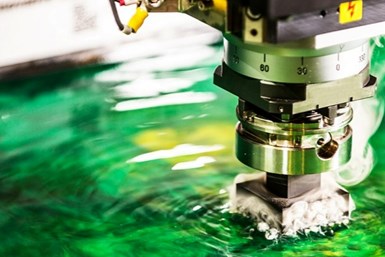Oelheld Coolant Increases Metal Removal Rates
The odorless coolant is said to offer increased removal rates, lower electrode wear, excellent surface qualities, lower refill quantities and longevity to provide lower overall operating costs.
Share


.png;maxWidth=45)
DMG MORI - Cincinnati
Featured Content
View More


Hwacheon Machinery America, Inc.
Featured Content
View More
ECi Software Solutions, Inc.
Featured Content
View More
Autodesk, Inc.
Featured Content
View MoreOelheld’s IonoPlus series of high-performance dielectrics were created to handle the highest demands on die-sinking electrical discharge machining (EDM). These cooling lubricants are suitable for all requirements during spark erosion — from roughing work to ultrafine finishing.
The coolant is suitable for EDM, a nontraditional method of removing metal by a series of rapidly recurring electrical discharges between an electrode and the workpiece in the presence of dielectric fluid.
The coolant is said to offer increased removal rates, lower electrode wear, excellent surface qualities, lower refill quantities and longevity, which all work to ensure lower overall operating costs. The lubricant is also odorless with good filterability and low evaporation.
The almost odorless and green dielectric fulfills all requirements from finishing to roughing machining. Using a specialized production method, the synthetic product is manufactured in a special blending process.
The IonoPlus series does not fall under the operational safety regulations and can be easily filtered with all common filtration systems.
Related Content
-
New Coolant Designed for Automotive Parts Production
Choosing the right coolant is critical for productivity, economic efficiency and machining quality.
-
Hennig Inc. Acquires Industrial Coolant Systems
ICS develops and field tests high-pressure coolant systems, coolant filtration systems and other machine tool solutions.
-
Blaser Swisslube Coolant Minimizes Tool Wear When Machining Titanium
IMTS 2024: Skytec metalworking fluids are well suited for titanium machining because they minimize tool wear and reduce the number of tool changes without compromising process reliability.








































